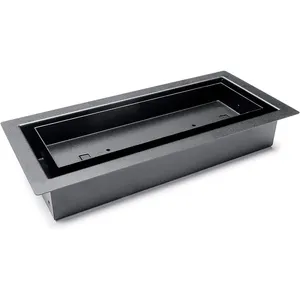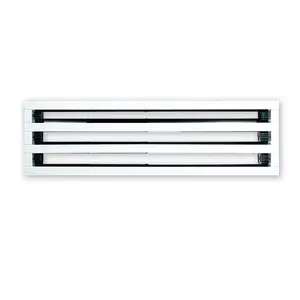
Lakeso 4x10 Inch Floor Air Grill Hvac Removable Metal Ventilation Air Floor Register Vents





















Soffit air vents are a critical element in maintaining the airflow within residential and commercial buildings. These vents are installed in the soffit area—the underside of an overhang or eave—which allows for efficient air passage from the attic or roof space to the exterior. Properly installed soffit vents can prevent the buildup of moisture and reduce the likelihood of mold growth and wood rot in the attic space.
There are various types of soffit vents available, including circular soffit vents, louvered soffit vents, and continuous soffit vents. Each type serves the same fundamental purpose but is suited to different architectural styles and airflow requirements. For instance, 6 soffit vent models are commonly used for smaller eave areas, while continuous soffit vents provide a more uniform airflow for larger spaces. These ventilation solutions are applicable in areas such as bathrooms, hotels, and living rooms where consistent air exchange is necessary.
Soffit vents are designed with features that cater to various functional and aesthetic needs. 3 round soffit vents with fly screen are an example of a feature that prevents insects from entering while allowing air to flow. The materials used for soffit vents typically include aluminum, plastic, or stainless steel, each offering durability and resistance to weather conditions. The choice of material often depends on the specific needs of the building and the environmental conditions it faces.
Effective soffit ventilation offers several advantages. It regulates the temperature in the attic, reducing the burden on HVAC systems during extreme weather conditions. By facilitating consistent airflow, soffit intake vent systems help in expelling warm, moist air, which is crucial in preventing the condensation that can lead to structural damage. Additionally, under eave vent systems can be an integral part of a balanced attic ventilation system when paired with ridge vents or other exhaust solutions.
Selecting the right soffit vent involves considering the vent's size, style, and material. For instance, attic eave vents are suitable for attics requiring significant moisture control, while dryer eave vent options are tailored for venting dryers through the soffit. It is essential to calculate the required net free area (NFA) to ensure adequate ventilation for the space. The NFA is the total unobstructed area through which air can enter or exit and varies based on the building's size and the local climate.
While Alibaba.com does not offer installation services, the platform facilitates the connection between buyers and a wide array of suppliers for soffit vents. Proper installation is crucial for the performance of soffit ventilation grilles and should be carried out by professionals to ensure compliance with building codes and manufacturer guidelines. Maintenance of soffit vents is generally minimal, requiring periodic checks to ensure they are free from blockages and debris.